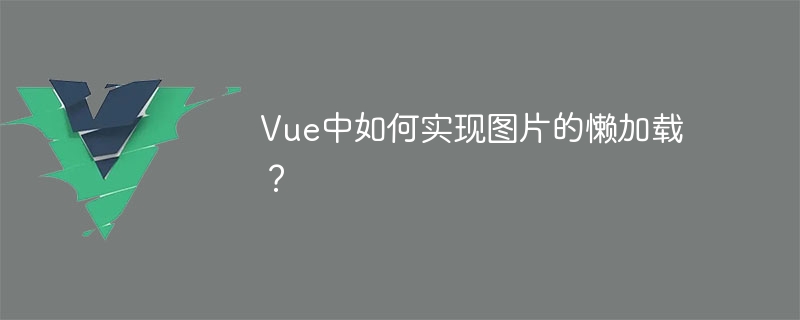

How to implement lazy loading of images in Vue?
Lazy loading (or lazy loading) is a technique for optimizing web page performance, especially suitable for websites that load a large number of images. In Vue, we can implement lazy loading of images through Vue instructions. This article will introduce how to use Vue's lazy loading plug-in to implement lazy loading of images, and provide corresponding code examples.
First, we need to install a Vue lazy loading plug-in. In this article, we will use thevue-lazyloadplugin. It can be installed through npm or yarn:
npm install vue-lazyload
After the installation is completed, introduce and register the plug-in in the main entry file of the Vue project (such as App.vue):
import Vue from 'vue' import VueLazyload from 'vue-lazyload' Vue.use(VueLazyload)
Now we can use the lazy loading directive in Vue components. Where images need to be loaded lazily, replace thesrcattribute with thev-lazydirective and set the image address:
In the above example, we change the image's The actual address (that is, the image address that needs to be loaded lazily) is bound to theimageSrcvariable. When loading for the first time, the value ofimageSrcis the address of the placeholder image. When the image is scrolled to the visible area, the value ofimageSrcis updated to the actual image address. This will prevent loading too many images from causing unnecessary impact on web page performance.
vue-lazyloadThe plug-in also provides some optional configuration items that can be configured according to actual needs. The following are some commonly used configuration options and their descriptions:
loading: Set the temporary placeholder for the image. It can be a URL string or an object containing the image URL.error: Set the image display when loading fails. Similar to theloadingoption, it can be a URL string or object.attempt: Set the maximum number of retries when image loading fails.observer: Whether to use IntersectionObserver to monitor whether the image enters the visible area. When it istrue, image loading will be triggered with a delay. When the image moves out of the visible area, image loading will stop. The default istrue, and it is recommended to keep the default value.Vue.use(VueLazyload, { loading: 'loading.png', error: 'error.png', attempt: 3, observer: true })
By using Vue’s lazy loading plug-in, we can easily implement the lazy loading function of images and optimize performance in websites with a large number of images. This article introduces how to install and introduce thevue-lazyloadplug-in, and how to use lazy loading instructions in Vue components. Some optional configuration items are also provided for configuration according to actual needs. I hope this article can help you implement lazy loading of images in your Vue project.
Code example:
The above is the detailed content of How to implement lazy loading of images in Vue?. For more information, please follow other related articles on the PHP Chinese website!
 How to enter safe mode on laptop
How to enter safe mode on laptop What does mesh networking mean?
What does mesh networking mean? The difference between vue2.0 and 3.0
The difference between vue2.0 and 3.0 How to shut down your computer quickly
How to shut down your computer quickly Which exchange is FIL coin on?
Which exchange is FIL coin on? How to restore mysql database
How to restore mysql database Implementation method of js barrage function
Implementation method of js barrage function Where is the audio interface located on the motherboard?
Where is the audio interface located on the motherboard?



